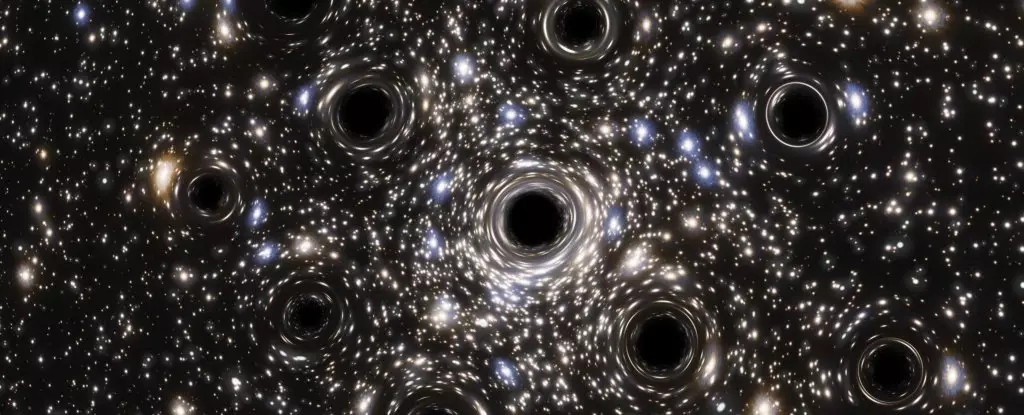Nestled within the expansive breadth of our universe, Palomar 5 serves as a striking reminder of the cosmic evolution that has unfolded over billions of years. This globular cluster, situated about 80,000 light-years from Earth, extends across an impressive 30,000 light-years and comprises a vast array of stellar entities intertwined in a delicate dance of gravity and motion. With dense concentrations of stars, globular clusters like Palomar 5 are often referred to as “fossils” of the early universe, brimming with insights into the conditions that shaped our cosmos.
Globular clusters, known for their spherical formations and their composition of aged stars, provide invaluable data for astrophysicists. Each of these clusters is theorized to have emerged from the same primordial gas cloud, giving birth to stars simultaneously. The Milky Way harbors over 150 globular clusters, making them vital tools for unraveling the history of our galaxy and the distribution of dark matter within it.
In recent years, the focus of astronomical research has shifted toward tidal streams—elongated arrays of stars that can stretch across the night sky. These structures have previously baffled astronomers, making their identification a challenging endeavor. However, advancements in data collection and analysis via the Gaia space observatory have paved the way for a more precise three-dimensional mapping of our galaxy, enabling the discovery of more tidal streams than ever before.
The formation of these tidal streams remains somewhat enigmatic, with theories suggesting they could arise from the disruption of globular clusters. Notably, researchers struggle to pinpoint a star cluster directly associated with many of the newly identified streams. Mark Gieles, an astrophysicist at the University of Barcelona, emphasized the need for extensive studies on streams like Palomar 5, which possess discernible stellar systems. This makes Palomar 5 particularly significant, likening it to a “Rosetta Stone” in our quest to comprehend the processes underpinning stellar evolution and disruption.
Palomar 5 distinguishes itself not solely by its extensive tidal stream but also due to its potential covert secrets—namely, the presence of a multitude of stellar-mass black holes. To analyze the intricacies of this cluster’s formation and development, Gieles and his team relied on advanced N-body simulations. Such simulations allowed them to replicate the trajectories and evolutionary patterns of the stars within the cluster.
Intriguingly, previous discoveries have indicated that globular clusters might harbor populations of black holes in their core regions. Recognizing the gravitational interactions between these enigmatic bodies and stars, the researchers incorporated black holes into their simulations. Findings revealed a surprising result: the number of black holes present in Palomar 5 surpasses initial estimates, with approximately 20 percent of the cluster’s total mass composed of these celestial entities.
Gieles and his colleagues established that the gravitational dynamics inherent in clusters could lead to a “slingshot” effect, propelling stars away from the cluster and into the tidal stream. This dynamic interaction suggests that a significantly larger population of black holes must exist than previously assumed, leading to about three times the expected number based on the stellar count within Palomar 5. Each black hole, formed from the supernova remnants of massive stars during the cluster’s formative years, boasts a mass approximately twenty times that of our Sun.
However, what truly captures the imagination is the future of Palomar 5 as illustrated by the team’s simulations. The research indicates that within a billion years, the cluster will evaporate entirely, eventually reducing to a sea of black holes orbiting the galactic core. While this fate may appear bleak, it mirrors the destiny of many other globular clusters scattered throughout the universe.
This outcome hints at broader implications; as our understanding of these clusters evolves, we may find them to be prime locations for locating black holes—particularly binary black holes that hold the potential for mergers and lead us closer to unveiling the mysteries surrounding middleweight black holes.
In essence, Palomar 5 encapsulates a treasure trove of insights into the life cycles of stars and the formation of black holes. It offers an essential perspective concerning the evolution of globular clusters and hints at a universe where stellar and black hole dynamics are inextricably linked. As research continues to unfold, further investigations into the nature of tidal streams and their associated star clusters will inevitably enhance our comprehension of the universe’s intricate tapestry. The secretive realm of black holes and their myriad interactions with stars remains an uncharted territory rife with potential discoveries, inviting astronomers and astrophysicists alike to venture ever deeper into the cosmic unknown.


Leave a Reply